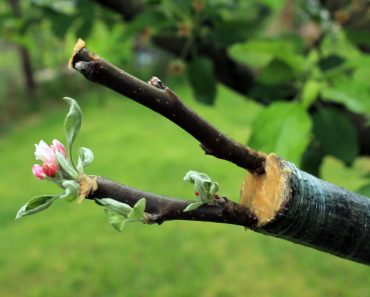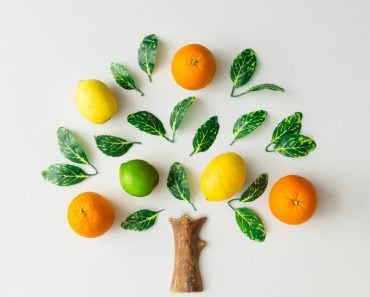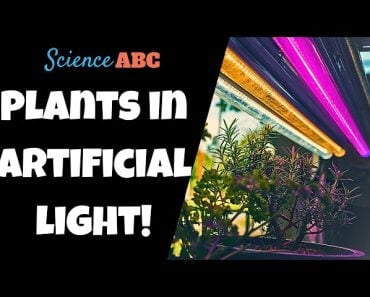Table of Contents (click to expand)
Plants reproduce sexually through the fusion of male and female gametes in the flower. Asexual reproduction is through stems, roots and leaves.
Plant reproduction comes in two types: sexual and asexual. Sexual reproduction is similar to human reproduction, in which male pollen and female ovarian germ cells fuse into a new organism that inherits the genes of both parents. The sexually reproductive part of a plant is the flower. Asexual reproduction involves vegetative reproduction through stems, roots, and leaves. Essentially, the parent plant regenerates itself by using one of its parts (roots, stems, or leaves).
Both sexual and asexual reproduction methods have their own advantages. In sexual reproduction, the newly formed plant is a combination of genes, giving it an advantage in adapting to changing environments. It can also avoid the transmission of certain diseases, as some genes are dominant and others recessive. Asexual reproduction is faster and perhaps the only way of reproducing in species that do not bear flowers. Since asexual reproduction is essentially the cloning of the parent plant, farmers can ensure that there is no genetic anomaly by selecting a healthy plant for reproduction.
Recommended Video for you:
Sexual Reproduction
Parts Of A Flower
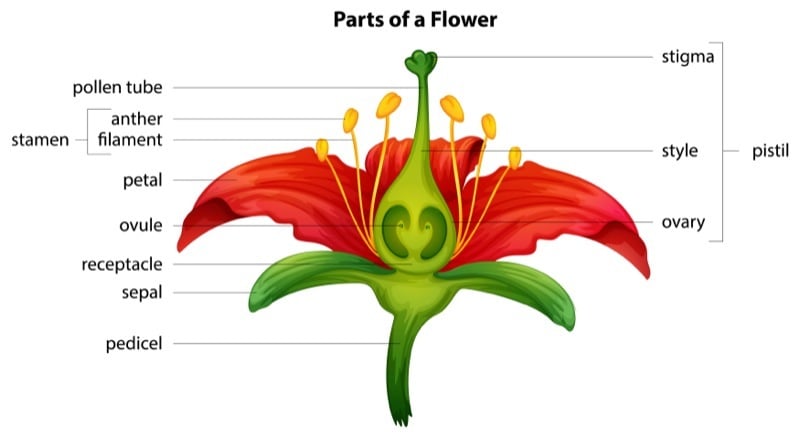
The flower consists of four whorls or parts (calyx, corolla, androecium, and gynoecium). The first whorl is the calyx, which contains the green sepals. The second whorl is the corolla which contains the petals. The petals are brightly colored to attract agents of pollination such as bees and other insects that help in reproduction. The petals also protect the two inner whorls that are directly involved in reproduction. The third whorl is the androecium – the male reproductive part of the plant. The innermost whorl is the gynoecium – the female reproductive part of a plant.
Androecium
The androecium contains a bundle of stamens composed of a tube called a filament and a swollen end called the anther. The anther contains pollen grains. Once matured, the pollen grains burst out to reach the female reproductive part of the flower.
Gynoecium
The gynoecium contains the pistil, which is composed of the tube (style) that reaches the ovary. The swollen tip of the style is the stigma that receives the pollen grains. In the ovary, there are the ovules, which turn into seeds.
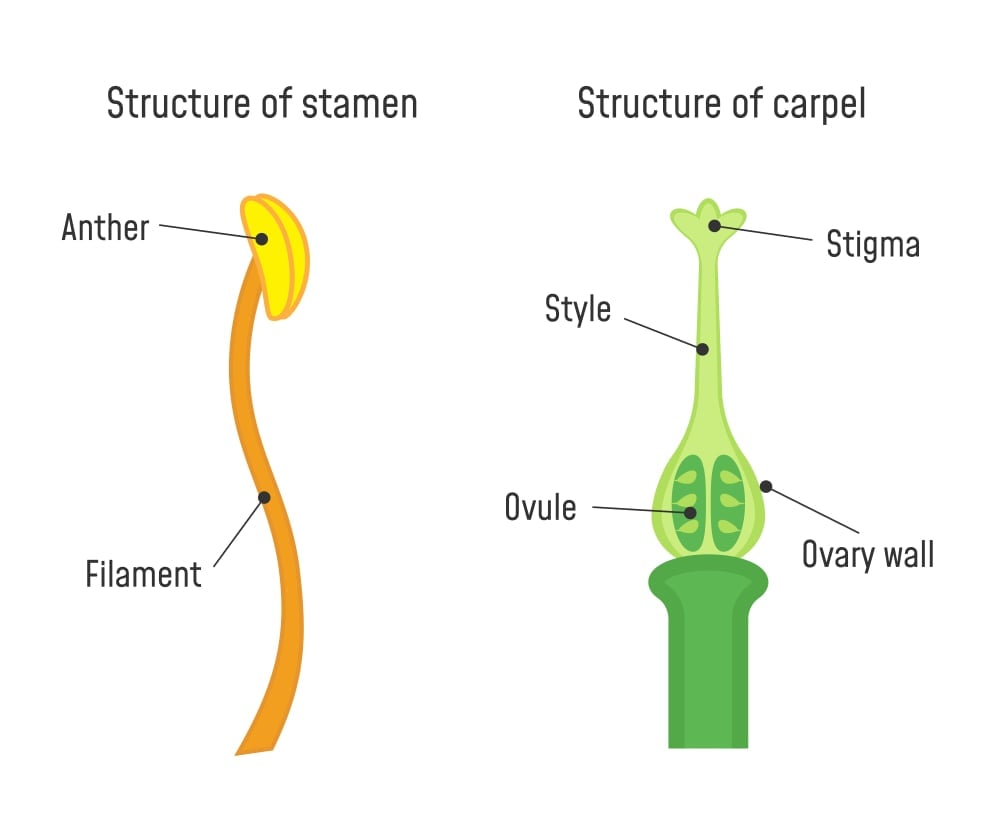
Unisexual And Bisexual Flowers
Unisexual or monosexual flowers contain either of the reproductive parts (stamen or pistil). Papaya, corn, and cucumber are examples of unisexual flowers. The same plant can have both male and female unisexual flowers. Bisexual or complete flowers contain both the male and the female gametes – stamens and pistil. Examples of bisexual flowers are roses, petunias, and mustard plants.
Pollination
The transfer of pollen from the anther to the stigma of a flower is called pollination. During fertilization, the male and female germ cells of the pollen unite to form a zygote. A zygote then transforms into an embryo, which eventually becomes a seed. The seed then germinates into a new plant. There are two types of pollination – self-pollination, and cross-pollination.
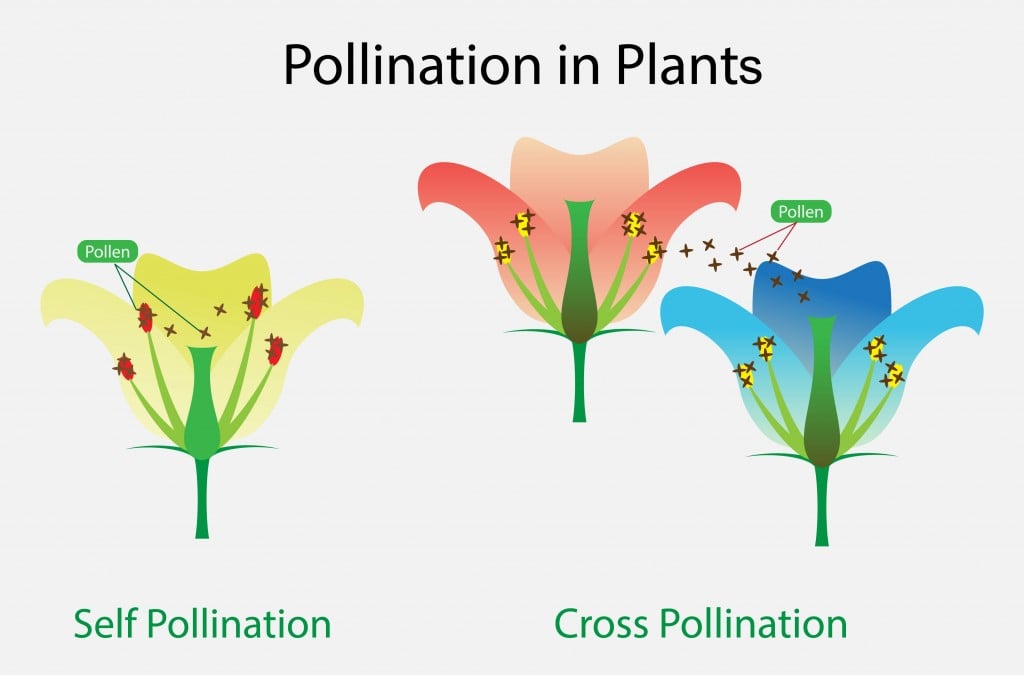
Self-pollination: If the pollen grain from the anther lands on the stigma of the same flower or another flower of the same plant, it is called self-pollination.
Cross-pollination: If the pollen grain of an anther falls on the stigma of a flower of another plant but of the same species, this is called cross-pollination.
Pollinators: Birds, insects, animals, water, and wind are all called “agents of pollination”, as they help the plants reproduce. Wind and water carry the pollen grains to other plants. Birds and insects are attracted to the color and scent of the flower. As they flit from one flower to another, pollen grains get stuck in their bodies and are then transported to other flowers. Animals and birds eat the fruit and scatter the seeds, or the seeds remain undigested and are thus excreted from their body in full form.

Asexual Reproduction
Asexual reproduction is how we can clone the best plant of a species. The Bartlett pear (1770) and the Delicious apple (1870) are still reproduced asexually to obtain the same quality product. Vegetative propagation is a form of reproduction by the leaves, stems, or roots of the parent plant. Asexual reproduction can also be done artificially by cutting, grafting, and layering.
Sweet potatoes, dahlias, and asparagus are all reproduced through tuberous roots. The roots of such plants contain buds that can form leaf shoots under favorable conditions. Potato and ginger are reproduced through stem tubers, the small buds present on the vegetable. Bryophyllum reproduces through leaf margins. If a leaf falls on damp soil, it can give rise to a new plant. Runners like strawberry reproduce through stems. Plants such as cacti reproduce when a part becomes detached from the parent plant. The detached part then starts a life of its own. The new plants produced by vegetative propagation are an exact copy of their parent plants.

Sexual and asexual reproduction are different adaptations that plants have used to perpetuate their species even in adverse conditions. Plants with flowers use sexual reproduction by attracting various agents of pollination. Plants without flowers rely on stems, leaves, and roots that form buds and produce identical copies!





